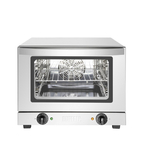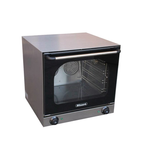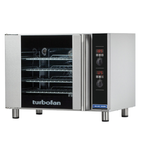Commercial Convection Ovens
A fan driven or fan-assisted convection oven circulates air evenly around food, allowing food to be cooked more evenly in a shorter time and at lower temperatures. In a commercial setting convection ovens are desirable chiefly because of their ability to cook very high quality food at speed, especially important for restaurants who wish to turn tables around quickly without compromising on quality.
Catering Appliance Superstore has a very good range of electric convection ovens from inexpensive counter top devices about the size of a microwave from manufacturers such as Buffalo or Waring, through the medium sized counter top ovens with increased capacity (like the Lincat models), right through to large free standing or wheeled units with a great range of controls and programmes to choose from, with options for introducing steam to control moisture content in food for a better end product.
![]() * Items marked with the 'Order Today Delivered Tomorrow' graphic qualify for Next Day Delivery only if the item is ordered before the Next Day Delivery cut off time shown on the product page. Some Next Day Delivery services are chargeable.
* Items marked with the 'Order Today Delivered Tomorrow' graphic qualify for Next Day Delivery only if the item is ordered before the Next Day Delivery cut off time shown on the product page. Some Next Day Delivery services are chargeable.



